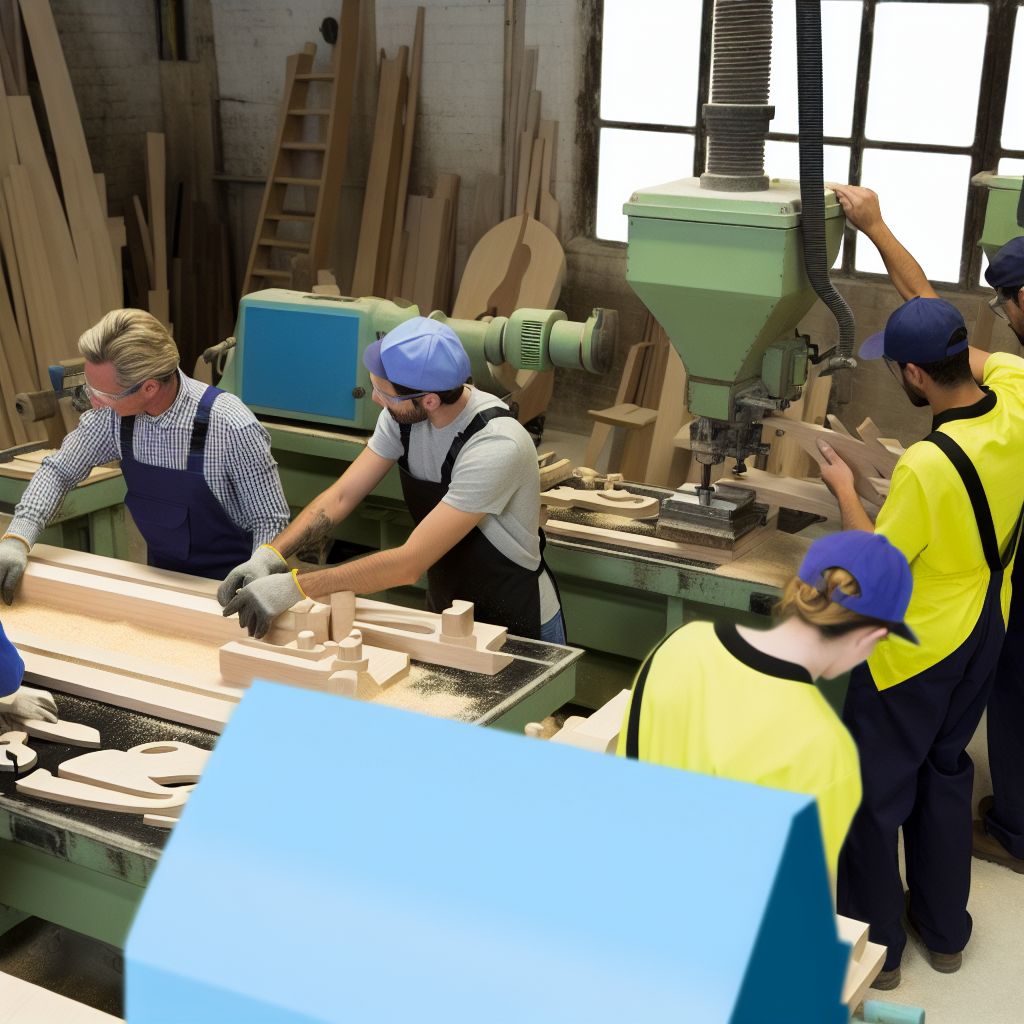Deutsch: Holzwerker / Español: Carpintero / Português: Marceneiro / Français: Menuisier / Italiano: Falegname
Woodworker in the industrial and industry context refers to professionals skilled in crafting, shaping, and finishing wood to create furniture, buildings, and other objects. Woodworkers play a crucial role in various sectors, including construction, furniture manufacturing, and custom woodworking projects. Their expertise encompasses a wide range of techniques from traditional handcrafting to advanced CNC (Computer Numerical Control) machining, allowing for the production of both functional and decorative items.
General Description

Woodworkers use a variety of tools and machinery to cut, shape, and assemble wood into desired products. They must understand different types of wood, their properties, and the best ways to work with them to achieve high-quality results. The profession demands a combination of technical knowledge, artistic skill, and precision.
Areas of Application
- Furniture Manufacturing: Designing and creating furniture such as chairs, tables, and cabinets.
- Construction: Working on the wood components of buildings, including framing, flooring, and finishing work.
- Cabinetry: Building and installing cabinets for kitchens, bathrooms, and storage spaces.
- Custom Woodworking: Crafting unique items according to specific customer requirements, ranging from artistic sculptures to custom-built ins.
Well-Known Examples
- High-quality, handcrafted furniture brands that emphasize craftsmanship and the beauty of natural wood.
- Custom woodworking shops that offer personalized designs and products not found in mass-produced goods.
Risks
Woodworking involves risks related to the use of power tools and machinery, including injuries from cuts and exposure to dust, which can lead to respiratory issues. Proper safety measures, including the use of personal protective equipment (PPE) and dust collection systems, are essential to mitigate these risks.
Treatment
Advancements in technology have led to the development of safer, more efficient tools and machinery for woodworkers. Education and training programs also play a vital role in teaching proper safety practices and techniques.
History and Legal Basics
Woodworking is one of the oldest professions, with a history that dates back to ancient civilizations. Over the centuries, it has evolved from purely manual craftsmanship to include sophisticated machinery and computer-aided design and manufacturing techniques. Regulations regarding safety and health standards in the woodworking industry ensure safe working conditions and protect workers from potential hazards.
Summary
Woodworkers in the industrial and industry context are skilled professionals who combine technical knowledge with artistic ability to create a wide range of wood products. Their work is integral to various sectors, including furniture manufacturing and construction. Despite the risks associated with the profession, advancements in technology and strict safety standards have made woodworking a safer and more efficient trade.
--
Related Articles to the term 'Woodworker' | |
| 'Woodworking' | ■■■■■■■■■■ |
| Woodworking in the industrial and industry context refers to the processes involved in fabricating, building, . . . Read More | |
| 'Woodwork' | ■■■■■■■■■ |
| Woodwork in the industrial context refers to the craft, production, and industry of creating objects, . . . Read More | |
| 'Metalworking' | ■■■■■■■■■ |
| Metalworking in the industrial and industry context refers to the process of working with metals to create . . . Read More | |
| 'Joinery' | ■■■■■■■■ |
| Joinery in the industrial context refers to the art and science of constructing the joints in woodworking . . . Read More | |
| 'Tool' | ■■■■■■■■ |
| A tool in the industrial context refers to any implement, device, or piece of equipment used to carry . . . Read More | |
| 'Carpentry' | ■■■■■■■ |
| Carpentry in the industrial context refers to the skilled trade and craft of processing wood to construct, . . . Read More | |
| 'Workbench' | ■■■■■■ |
| Workbench in the context of industry refers to a sturdy, flat surface or table designed for manual work, . . . Read More | |
| 'Workshop' | ■■■■■■ |
| Beginning with the Industrial Revolution era, a workshop may be a room or building which provides both . . . Read More | |
| 'Replicator' | ■■■■■■ |
| Replicator in the industrial context refers to a device or system designed to duplicate or reproduce . . . Read More | |
| 'Craft' | ■■■■■ |
| Craft: A craft is a pastime or a profession that requires some particular kind of skilled work. In a . . . Read More | |
